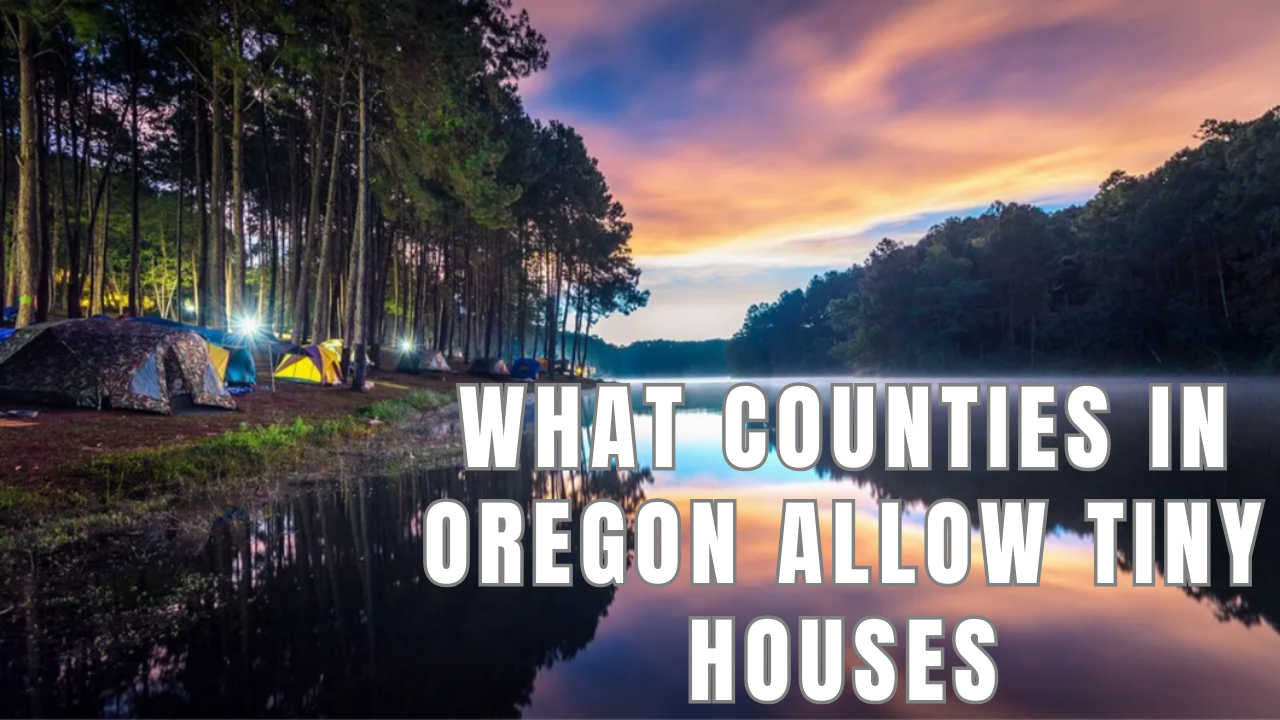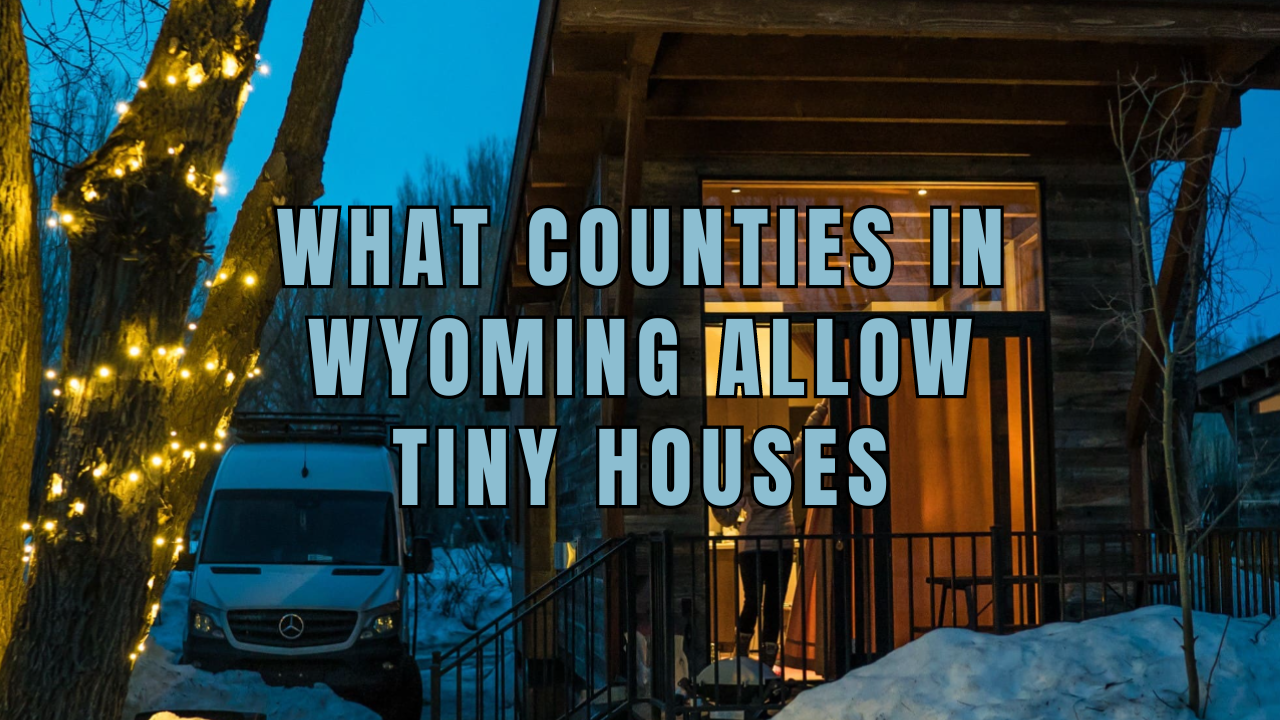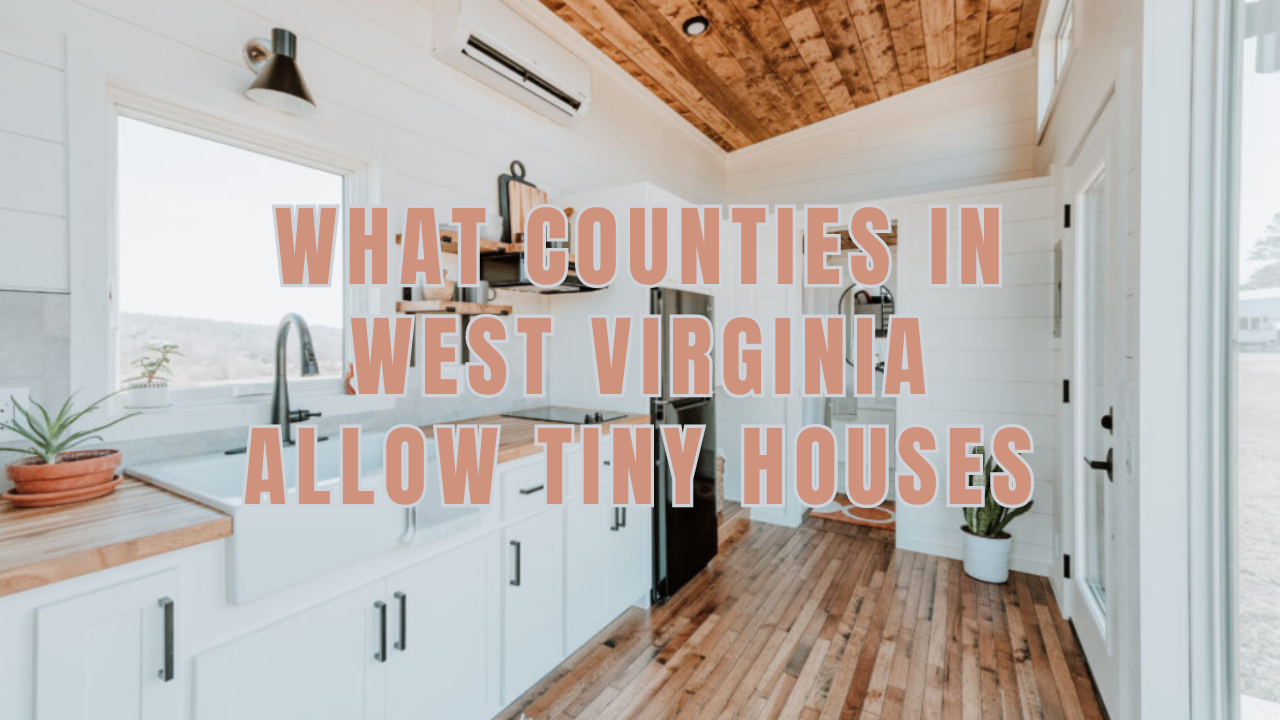People who wish to live more simply, cheaply, and sustainably are drawn to tiny homes. Nevertheless, not every locale is friendly to these tiny homes, and local rules and ordinances might differ greatly.
If you want to construct or buy a tiny home in Oregon, you need to be aware of which counties permit them and the regulations that apply to you.
In this post, we will examine the situation of small homes living in Oregon and present some helpful advice and general considerations to make your tiny house dream come true.
Can You Make a Tiny House in Oregon Your Main Residence?
Yes, you can make a tiny house in Oregon your main residence. The state is paving the way for tiny houses to be recognized as primary residences, particularly in Portland, where regulations have been updated to support this lifestyle.
However, the path to tiny house living involves careful consideration of local zoning laws, building codes, and safety standards. With the right approach, tiny houses offer a flexible, innovative, and affordable solution to Oregon’s housing needs.
Tiny House Prices in Oregon
Multiple factors can influence the price of tiny houses in Oregon, among them the price of the land, permits, taxes, and the amenities you want to include in your tiny dream house. The average price for a tiny house in Beaver State ranges from $35,000 to $120,000.
In Oregon, What Counties Allow Tiny Houses?
It is one of the most tiny house family states; these constructions are legal across Beaver State, particularly in all the big counties like Clackamas County, Lincoln County, Multnomah County, and Marion County.

Multnomah County
This county, which includes the city of Portland, has been a leader in tiny house acceptance. Portland allows tiny houses and tiny houses on wheels (THOWs) as accessory dwelling units (ADUs) in all residential zones.
Clackamas County
Home to Mt. Hood, Clackamas County also allows tiny houses and THOWs as ADUs, subject to certain restrictions and requirements.
Lane County
This county, which includes the city of Eugene, has also shown a willingness to accommodate tiny houses, particularly in rural and unincorporated areas.
Lincoln County
Home to the city of Waldport and Tiny Tranquility Park, Lincoln County is another area where tiny houses have been welcomed.
Deschutes County
Located in central Oregon, Deschutes County has shown openness to tiny houses, particularly in the context of vacation rentals.
Marion County
This county, home to the state capital of Salem, allows tiny houses in certain areas, subject to local zoning and building regulations.
Oregon Tiny House Laws: Local Zoning Rules and Regulations
An amendment to the Oregon Reach Code allows local building officials to relax state requirements for tiny houses, as long as they can do so safely. Let’s dive into the laws for some of the favorite Oregon counties that welcome tiny house lifestyles.
Marion County
Salem, the state capital, forbids tiny houses inside its boundaries. Nevertheless, in rural regions beyond the city boundaries, small houses—also known as auxiliary dwelling units or ADUs—are permitted by county legislation.
Here, you can look at the Marion County tiny house ordinances.
Multnomah County
Contact Multnomah County immediately if your small house is inside the county’s boundaries. You will have to get in touch with the City of Portland otherwise. The zoning and set-back regulations for small houses vary throughout the localities; however, guest houses, additional buildings, accessory dwelling units, and hardship housing are all permitted.
Wasco County
There are no minimum size requirements for tiny homes in Wasco County, and no legal distinction between permanent tiny houses and regular houses under the regulations. The home is a habitation if it has sewage and water utilities. Temporary small houses on wheels are for no more than 30 days. To be classified as a residence manufactured tiny houses must be 18 feet wide and fulfill exterior finishing requirements.
Regulations for Tiny Homes In Oregon
In Oregon, tiny houses are subject to rules and regulations that vary by county and city. Some areas may require minimum square footage and a specific distance from existing structures, while other restrictions on where tiny houses must be parked. Research and understand the local regulations before building or moving a tiny house in Oregon.
Permanent Structure Rules
We refer to a permanent structure when your tiny house is attached to a proper and approved foundation.
To legally build a permanent tiny home in Oregon, you must follow the federal standards or the Oregon building code. Bear in mind that the regulatory models for permanent structures are well established. Here are the points for people considering joining the Oregon tiny house movement.
- State-wide Zoning Changes
Oregon’s 2019 law has been influential in changing single-family zoning to allow for more diverse housing types, including tiny homes. By June 2022, cities in the Portland area or with populations over 10,000 were permitted duplexes in areas zoned for single-family tiny homes. Larger cities must also allow triplexes and fourplexes, which can include tiny homes.
- (ORSC) Oregon Residential Specialty Code
The ORSC allows one sleeping loft or tiny home with a ladder to be the primary access to this space in homes under 600 square feet. Safety regulations for these structures include an automatic fire sprinkler system. Additionally, the builders, electricians, and plumb working in these tiny houses must be from Oregon.
- (OSHSC) Oregon Small Home Specialty Code
The OSHSC allows the construction of single-family residences of up to 400 square feet. Sleeping lofts with ladder access provide the structure with fire protection. These tiny houses are subject to plan review action, permits, inspections, and contractor licensing requirements as the ORSC tiny homes.
- Manufactured Home Construction and Safety Standards, Department of Housing and Urban Development (HUD) of the United States
Unlike the previous ones, HUD standards are not explicit about lofts and ladders. It is a more innovative approach for builders to think outside the box. Manufacturers have their designs certified by a federally approved inspection agency before starting the construction. All the tiny homes built under the HUD standards are installed inside with a local permit.
Temporary Structure Rules
The tiny homes attached to a frame or chassis, with or without wheels, are classified as temporary dwellings. Unless they are in a mobile home park, they cannot be permanently attached to the ground and used as a permanent dwelling.
From January 1, 2020, the State Building Code stepped back from regulating the construction of these temporary dwellings. It applies to recreational vehicles, park model recreational vehicles, and tiny homes on wheels. As a result, if you are a builder, developer, or consumer, you work directly with your local municipality to ensure your temporary tiny home can be legally placed and lived in.
Mobile tiny homes designed to be moved on public highways fall under the Federal Motor Vehicle Safety Standards. These standards, adopted by the National Highway Traffic Safety Administration (NHTSA), cover everything from brakes and lights to wheels, tires, rear impact guards, and VINs.
In Oregon, mobile tiny homes cannot be wider than eight and a half feet. If a temporary tiny home is not for regular highway movement, it falls under a different set of regulations.
Transitional Structure Rules
Local governments in Oregon have the authority to establish transitional housing units within their urban growth boundaries. These units are seasonal, emergency, or transitional living for populations lacking permanent or safe shelter who are not fit for low-income housing.
Transitional housing units include yurts, cabins, fabric structures, and other accommodations. The establishment and regulation of these units are at the local government level.
The Oregon Transitional Housing Standard, established in 2017, provides suggested construction standards for municipalities to consider when setting up transitional housing units. However, this standard is only a service to the local government and does not have any regulatory impact until the local government adopts it.
In Oregon, Where Can I Build A Tiny House?
In Oregon, there are a few options for building a tiny house. One popular choice is to build it on private property, assuming the land is zoned for residential use and meets all relevant building codes.
Another option is to build a tiny house on wheels and park it in a designated tiny house community or RV park. Some municipalities also allow homeowners to build accessory dwelling units on their property, which could include a tiny house. Research local regulations and acquire the necessary permits before starting construction.
Portland has taken significant steps by allowing recreational vehicles (RVs) and tiny houses on wheels (THOWs) to be used as legal housing options on residential properties. This initiative, which began in August 2021, requires no certifications or inspections for RVs/THOWs and aims to address the affordable housing crisis.

Oregon Tiny House Communities
While tiny house communities offer the perks of shared lifestyles and support systems, not all are legal. It’s crucial to vet potential communities before joining. Tiny Tranquility Park, located near Waldport on the Oregon coast, is an example of a tiny house community in the state.
Tiny Tranquility
Location: Waldport, OR
It is a tiny community overlooking the Pacific coast that offers visitors and residents an exquisite taste of the tiny living movement.
In Tiny Tranquility you will find laundry facilities, a game entertainment center, a covered outdoor grilling area with a fireplace for gathering, and even a dog park for your best friend. However, if you are looking for more entertainment options within a few miles, you can find amusing activities such as hiking, biking, golfing, swimming, fishing, and boating.
Mt. Hood Tiny House Village
Location: Mt. Hood, OR
With its unique view of Mt. Hood, this mesmerizing tiny home village awaits its visitors. What makes it particularly special is that it is close enough to Portland for tourism activities, but far enough to provide that magical vibe of comfortably living in the woods.
My Tiny House Village
Location: Sherwood Forest, OR
For wine lovers and enthusiasts, this is the perfect place for your tiny house experience. My Tiny House Village is close to many of the most emblematic Oregon wineries and it is at driving distance from Portland, enabling you to have a taste of Portland effortlessly.
Tiny House Builders Near me
You may choose from several models and receive your ideal house nationwide with Great Lakes Tiny Homes, saving you the trouble of looking for local builders. Moreover, RV Industry Association (RVIA) member Great Lakes Tiny Homes is a proud part of it. This participation is evidence of their dedication to maintaining high manufacturing standards and rigorous adherence to the construction, safety, and legal requirements for tiny homes.
Do I Need a Certified Builder?
You do, indeed. Consider taking a different tack, but there are significant dangers. You may be confident that your tiny house complies with laws and regulations by working with an RVIA-certified builder, such as Great Lakes Tiny Homes. It also provides peace of mind because it guarantees the materials are high-quality, long-lasting, and safe.
Working with a licensed builder also has other benefits, such as simpler access to finance and insurance coverage, as an RVIA confirms that a house satisfies all requirements for being a safe and livable environment.
FAQs
Can I Build a Tiny House in My Backyard in Oregon?
Yes, you can build a tiny house in your backyard in Oregon, provided it meets local zoning laws and building codes. In cities like Portland, tiny houses and THOWs are considered accessory dwelling units (ADUs) and are permitted in all residential zoning codes.
What Utilities Do Tiny Houses in Oregon Need?
Tiny houses in Oregon require the same utilities as traditional homes, including water, electricity, and sewage. However, many tiny homes are to be off-grid and use alternative sources like solar power and composting toilets.
Do Tiny Houses Increase Their Value in Oregon?
Just like traditional homes, tiny houses can appreciate depending on location, upkeep, and market demand. However, because the tiny house market is still relatively new, appreciation trends are less predictable.
Conclusion
Tiny homes are an excellent choice for Oregonians looking to live more simply, cheaply, and sustainably. Notwithstanding your preference for a mobile or permanent tiny home, you must adhere to all applicable construction, zoning, fire, and environmental rules in your city and county before starting your tiny house adventure.
Additionally, you must locate your tiny home in an appropriate location, such as an RV park, a tiny house community, or an ADU. You may take advantage of the advantages and difficulties of living in a tiny house in Oregon by being well-informed, making advance plans, and abiding by the regulations.





